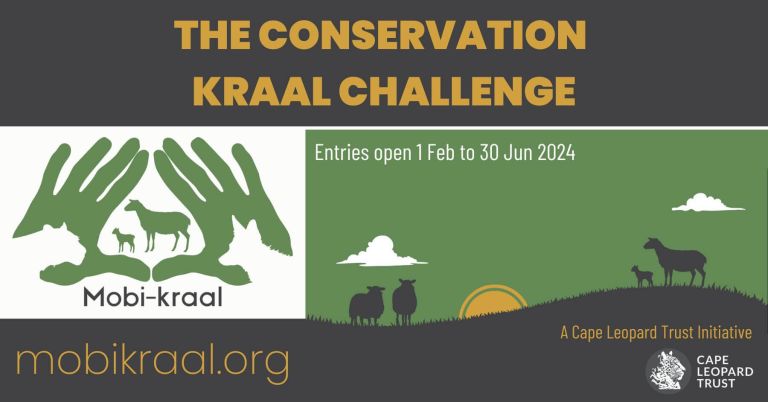Cage traps
Cage traps (or box traps) are a method of capturing wild animals that are considered "non-lethal or friendly". In support of our ongoing research, the Cape Leopard Trust uses purpose built cage traps, under close supervision, when and where applicable. It is, for instance, very easy to release a non-target species (relatively) unharmed from a cage trap.
We have, however, come across several incidents where animals, including leopards, have been caught in cage traps that have not been built or monitored properly by the landowner. The effect is no less savage than a gin trap as animals die from thirst, starvation and self-inflicted injury. Certain animals, such as jackal, are almost impossible to capture in a cage trap and their expense and complexity render them superfluous for general predator control.
The Cape Leopard Trust often uses walk-through cage traps when we need to catch leopards. These require no bait as they are set in a suitable area and disguised as a natural tunnel. Importantly, various means are used to slow the leopard down in the centre of the cage allowing the doors to close with the animal well inside. When the doors are triggered shut, an electronic signal is sent out, which we pick up using telemetry. Radio signals are checked every two hours to detect whether traps have been triggered.
We also use standard cage traps which are only open on one side (door). We place bait inside this trap behind a pressure plate, which is activated when a large animal steps on it. These cage traps are ideal in areas where there is not a clear path for a walk through trap to be placed. When the door is shut, a radio signal is emitted which alerts us to the trap being triggered. These signals are also checked on a two-hourly basis.
Foot loop traps
The Cape Leopard Trust are also making use of a globally acclaimed large-carnivore trapping method - foot snares or foot loop traps. This trapping method is promoted by the wildlife capture guidelines of the American Society of Mammalogists, an organisation which is regarded as a world-leader in promoting ethical research standards. One of the world's largest big cat conservation projects, Panthera also use this as their primary capture technique. To be safe, we have also consulted with ethics committees from the various institutions we are affiliated with and have received permits (from CapeNature) and full ethics clearance for this trapping method from the University of Bristol (UK) and from Rhodes University.
Foot snares are very safe and have no threat of injury when monitored properly by researchers. Currently they are used for leopard trapping in South Africa by Panthera and the University of Pretoria Mammal Institute. Furthermore, snow leopards, jaguars, cougars and tigers are all routinely and safely caught by researchers using this method with great success.
The Cape Leopard Trust has found that this method has proved 100% target specific, with no non-target species captured. The Cape Leopard Trust has gone to extreme lengths to do this properly, including hiring an eminent American professional trapper to train our staff in this technique.

















